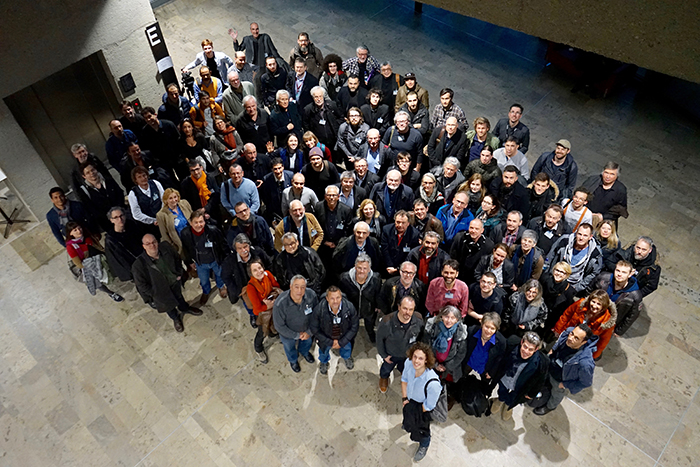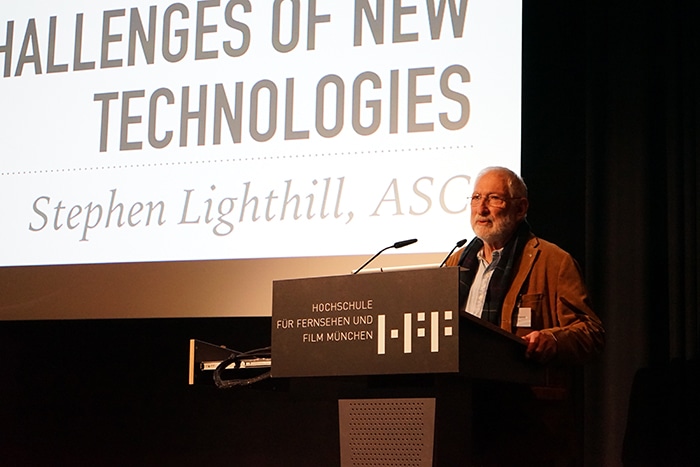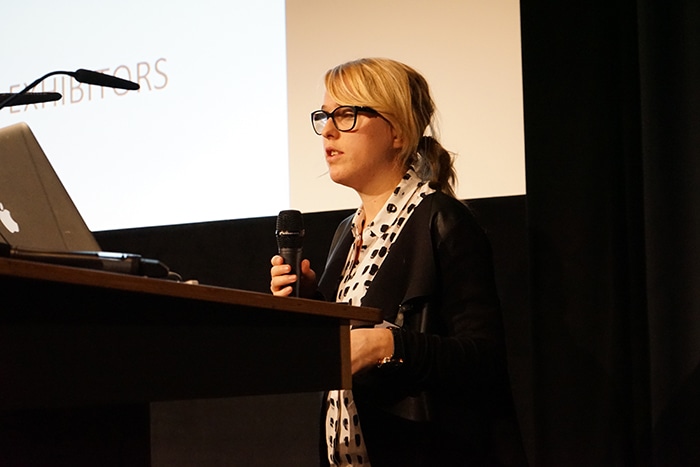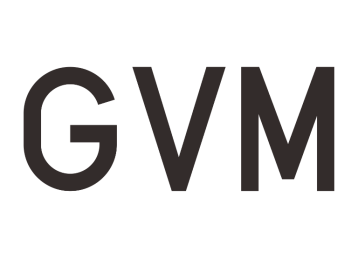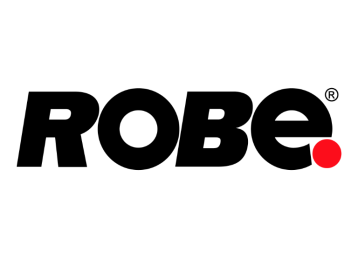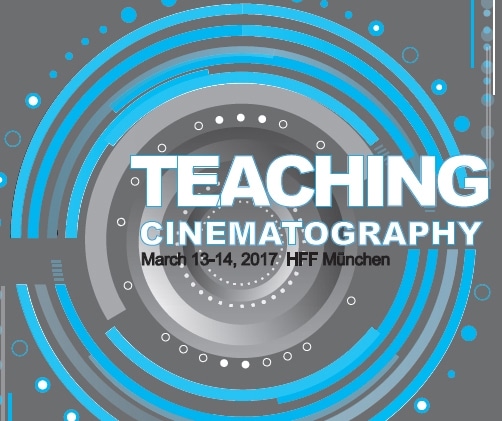
Taking in consideration the remarks received from the attendees about the Teaching Cinematography Conference we can consider it was a great success. In fact, for the organization the most optimistic expectations were clearly overcome. When the IMAGO Education Committee began preparations and planning for the conference it was estimated that we could have around 40 attendees or maybe we could have as maximum up to 50. But it ended up by having 120 attendees from 30 different countries and some came as far as Australia, Saudi Arabia and South Africa.
The success cannot be majored only for the number of attendees. The quality of the key speakers, the presentations, the round table discussions the intensive program enriched considerably the event.
The highly number of attendees prove that the subject matter of teaching cinematography is an actual concern for schools, teachers and cinematographers in general. The IMAGO Education Committee was right in organizing such an event. It proved that the topic is still a matter of concern even after one decade passed from the digital cinema acquisition revolution. The revolutionary RED One which appeared in the parking lot in Las Vegas during NAB in 2006 still deploys some passionate discussions between those who defend film versus digital.
| Stephen Lighthill, ASC, AFI |
The education method has swing quite a few degrees not to say that swung 180 degrees. The classic method of educating cinematography by teaching to students’ skills to manipulate cameras, magazines, film stock, exposure, should have now a different approach. The image is directly on a display. This fact makes quite a great difference. Apparently gives an overall sensation that there is lack of discipline and commitment to learn. More discipline should be implemented and new tools must be thought like exposure reading devices like waveforms and false colour systems, like Stephen Lighthill ASC, teacher of the AFI (American Film Institute) has accentuated in his presentation.
But there is the other side of the coin, how to impose more discipline when there is coming a lot of other narrative tools to be explored and should not be at all controlled by any constraint of procedures? Ilse Schoonekapp VUB (Vrije Universiteit Brussel ) presented a role of new tools from Virtual Reality, 360 degrees image capture, video walls, a whole bunch of equipment put in the market daily from manufacturers, bringing certainly a new vision for film makers of the XXI century. Schoonekapp in her presentation has called for the attention of the schools and teachers for the emerging tools which we do not yet know what to do it with it and where does it take us. Certainly, to a different step. Classic narrative maybe is not applied with the new technologies a new thinking an approach should be explored plus a new understanding of the various platforms of distribution
This leads for example to the Game industry. In words of Yuri Neuman GCI (Global Cinematography Institute) «cinematography for games is a growing industry for cinematographers». The game industry the concept of each of the platforms are getting more realistic day by day which demands an expert of light design, light direction, mood, concept, to give it a sensation of reality and the volumetric weight needed for the game. To become a cinematographer in the game industry a necessary knowledge of many tools today available are crucial for the future. A great knowledge of the VR, 360 degrees’ technique are a must for the game cinematographer.
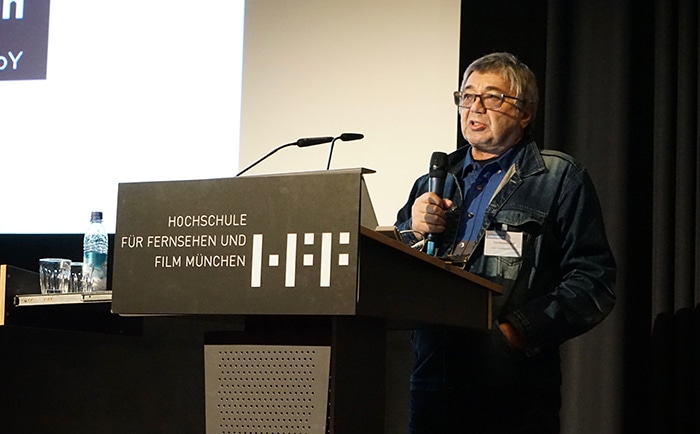 |
 |
| From top to bottom: Ilse Schoonekapp VUB (Vrije Universiteit Brussel )Yuri Neuman GCI (Global Cinematography Institute) Prof. Ludger Pfanz HFG/ZKM |
Prof. Peter Slansky HFF host of the Conference has given a presentation about teaching students to look at the technique with more care and accuracy. Slansky presented himself like being maybe the only one technician professor in the cinematography department in film schools which without being himself a cinematographer. He made note of it. Testing equipment to its potential is a task that should be taught.
Phillippe Ros AFC has presented along with Rolf Coulanges BVK both members of the CCTV IMAGO Committee a series of tests of the SONY F55 camera with different logs. In an exercise that can be an example conducted by and for students.
With a different approach cinematographer Peter Zeitlinger BVK, ASC, showed some of his own creative examples used on films where imagination and creative tools were applied in low budget films. The commitment of the student to exercise his imagination applying solutions to create innovative images without using only what is available in the market. The student must go further than the common idea to resolve the problem in post. In fact, Zeitlinger showed how interesting the cinematography profession can be, when using imagination to create artistic images.
In the same token in a very passionate presentation Prof. Ludger Pfanz HFG/ZKM demonstrated how wide are the options now with the new technologies like VR and 360 degrees to be creative and passionate to tell stories, but not only stories, but as well content with meaning. Unlike putting restrictions is better to give freedom to create.
Charles Poynton the HD scientist was clear by advising that to take up the outmost of a video signal (color) is to capture an entire original image and treat it later in the pipeline. It was also clear that to have a proper terminology for video treatment is essential for the industry.
Dr. Steurer (ARRI) has showed how far computational Imaging and Lightfield photography
Marijke van Kets SBC. NTU-ADM and the duo Prof. Stefan Grandinetti (BVK, HDM) and Jan Frolich showed that the importance of involving students with experiments and PhD exercises. Kets, showed how important is to use a lens to express a specific feeling and Grandinetti the technical experiment of HDR and all its procedures.
There were seven round tables discussing different topics. As soon as possible IMAGO will present the different results and publish here:
1• Cinema and Authorship
2• Documentary Cinematography – new technologies, new role of the DOP?
3• Shooting, post production & the proper balance for creation in cinematography –
4• Educating the eye
5• Cinematographer and Director: How do we initiate the teamwork?
6• “Expanded Cinematography”® Programs as a Method of Education of Modern Cinematographers
7• Colour Grading – a Must-learn for future DOPs?
In conclusion, the conference seemed to be short. The attendees would like to have more topics, to discuss in more round tables, to get more speakers in one word even being so tired the audience wanted more so IMAGO and its Education Committee considers to organize another one in the future.
By Tony Costa
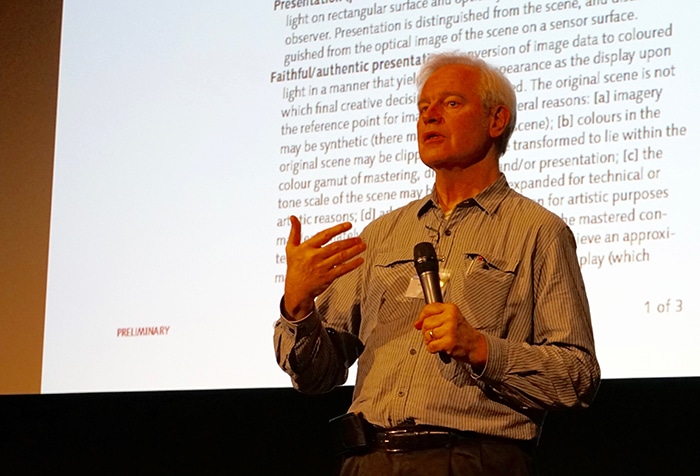 | 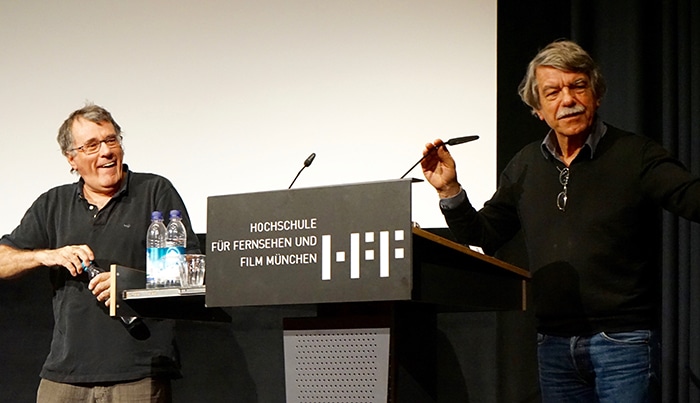 | 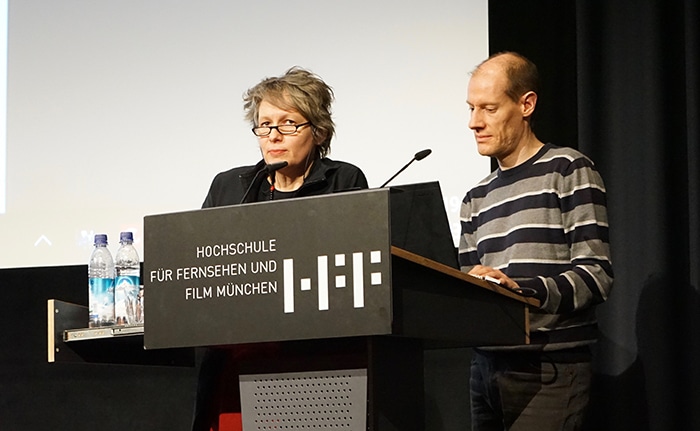 |
| Charles Poynton | Phillippe Ros AFC Rolf Coulanges BVK the CCTV IMAGO Committee | Birgit Gudjonsdottir BVK.IKS and Dirk Meier colorist |
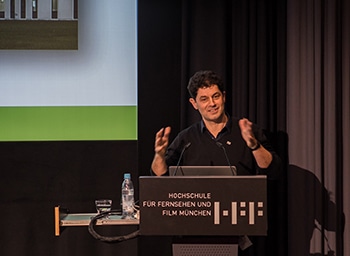 | 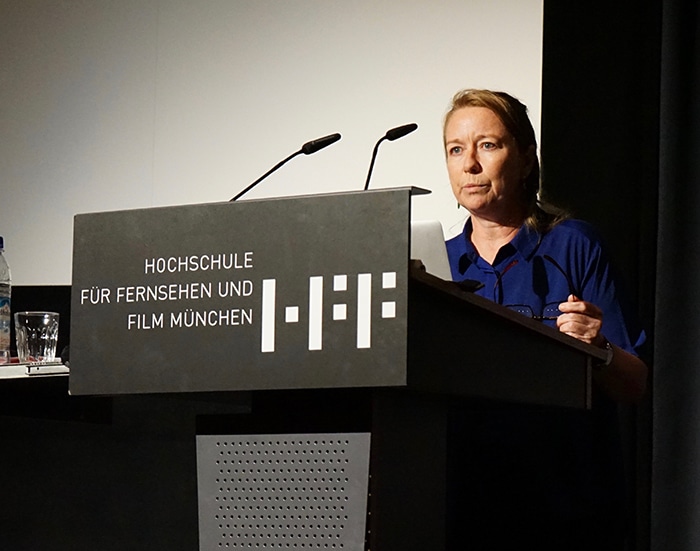 | 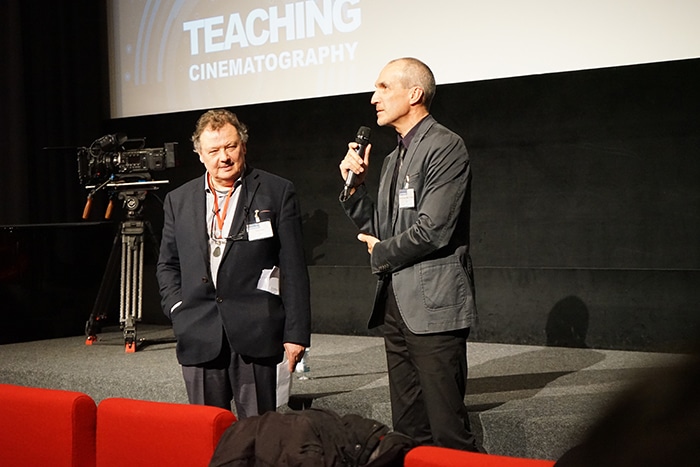 |
| Prof. Stefan Grandinetti (BVK, HDM) | Marijke van Kets SBC. NTU-ADM | The hosts Tony Costa IMAGO and Prof. Peter Slansky HFF |
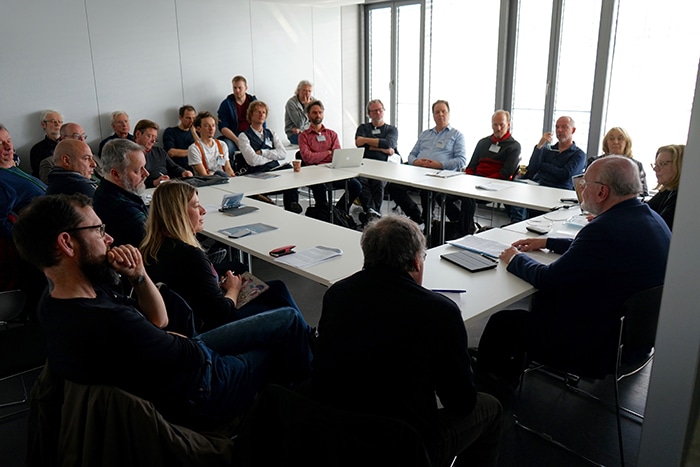 | 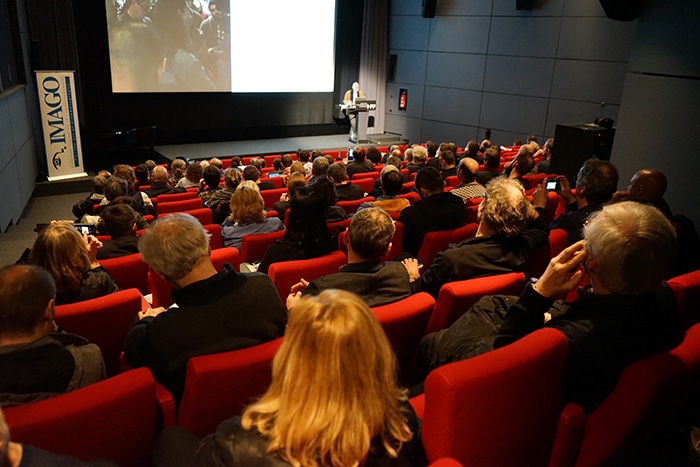 | 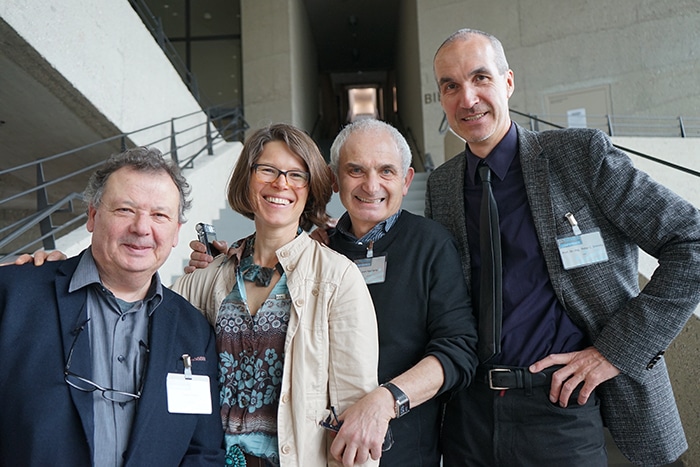 |
| Round Table Discussion «Educating the Eye» moderated by Kurt Brazda AAC and Gabriella Reisinger AAC | A surprise number of attendees, 120 | The organizers, Tony Costa aip, ULHT; General Manager Katrin Richthofer; Jean-Paul Jarry and Prof. Peter Slansky HFF |
PHOTOS by Paul Rene Roestad IMAGO President
